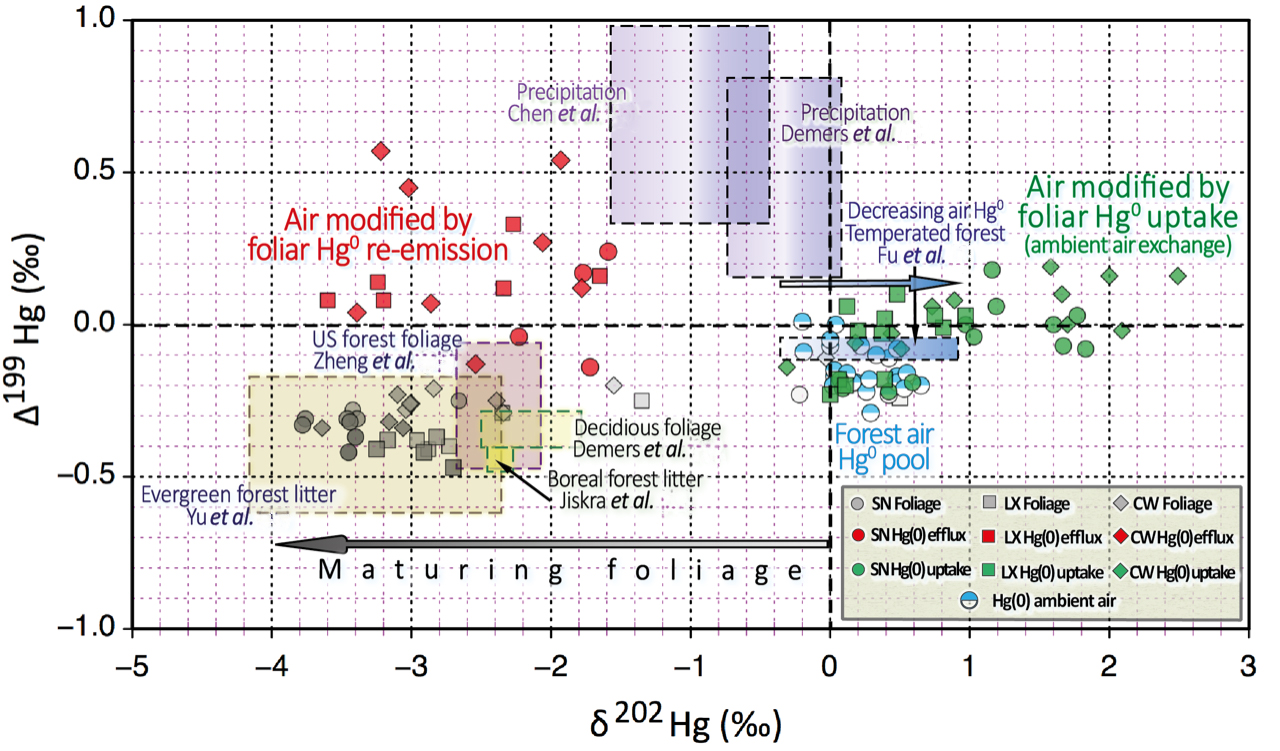Forest ecosystems emerge as a net sink of atmospheric mercury (Hg0), which may divert nearly ~20% of its total burden annually. Nonetheless, lack of understanding in spatial and temporal forest foliage-atmosphere Hg0 exchanges causes large uncertainties for constraining Hg0 exchange over natural surfaces globally.
There remain considerable unknowns in the sources and sinks of Hg0 in forest vegetation, the extent of partial re-emission back to the atmosphere and its governing processes, and the effect of environmental controls on the magnitude and dynamics of Hg0 fluxes.
A research team led by Prof. FENG Xinbin from the Institute of Geochemistry of the Chinese Academy of Sciences (IGCAS) studied the Hg0 exchange process between foliage and atmosphere using Hg stable isotope technology in subtropical evergreen broad-leaved forest at Mt. Ailao, Yunnan province, China. Their findings were published in Environmental Science & Technology.
The results showed that atmospheric Hg0 was the dominant source of foliar Hg and the Hg0 exchange between foliage and atmosphere was bidirectional process.
The foliage represented a diurnally changing sink for atmospheric Hg0 and its Hg content increased with leaf age and mass. Upon Hg0 uptake, maturing foliage became progressively enriched in lighter Hg isotopes and depleted in odd mass isotopes (Fig.).
The measured isotopic composition of foliage Hg and isotopic shift caused by Hg0 evasion from foliage supported that Hg0 emitted from foliage was derived from Hg previously metabolized and bound in the leaf interior, and then recycled after reduction, not merely a retroflux of recently deposited Hg0 on foliar surface.
An isotopic differential mass balance model indicated that the proportion of foliar Hg0 efflux to uptake gradually increased from emergence to senescence with an average flux ratio of 30%.
The study was supported by the National Natural Science Foundation of China and Opening Fund of the State Key Laboratory of Environmental Geochemistry.
 |
|
Fig. Observed Hg isotope composition in various aerial and aerial-influenced compartments of the forest ecosystem (Image by IGCAS) |
Contact:
FENG Xinbin
Institute of Geochemistry, Chinese Academy of Science
E-mail: fengxinbin@vip.gyig.ac.cn
(By Professor FENG Xinbin's group)